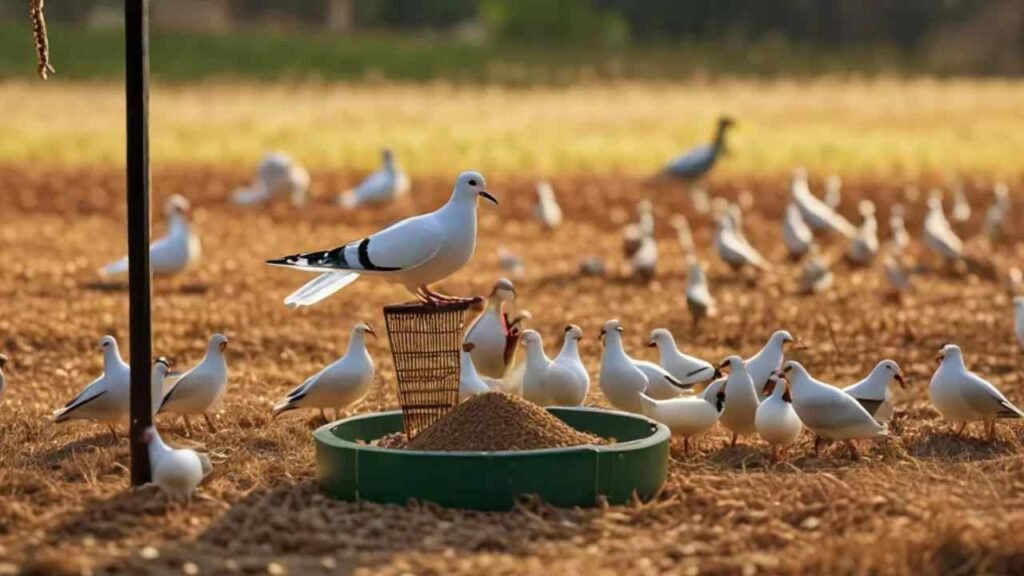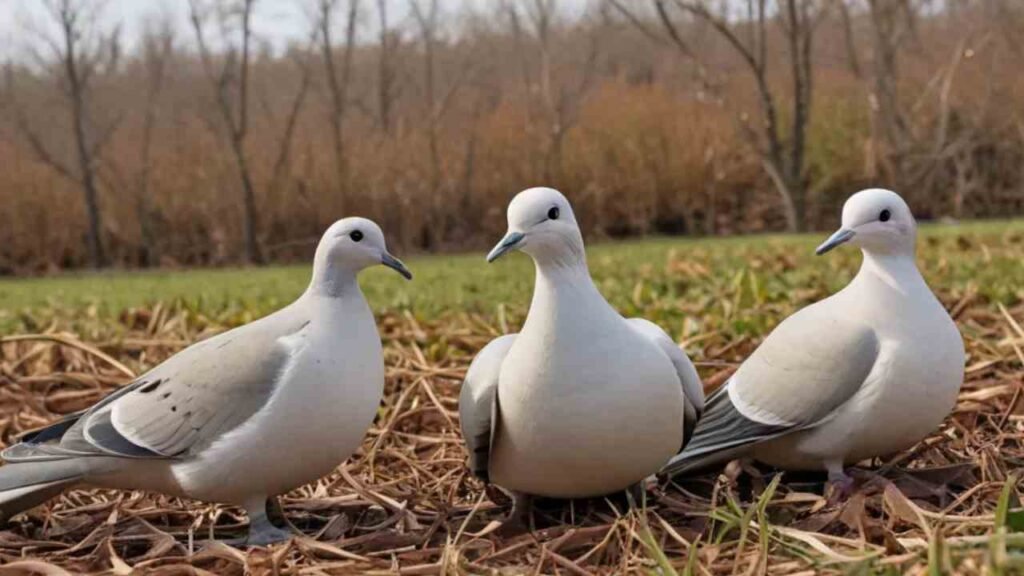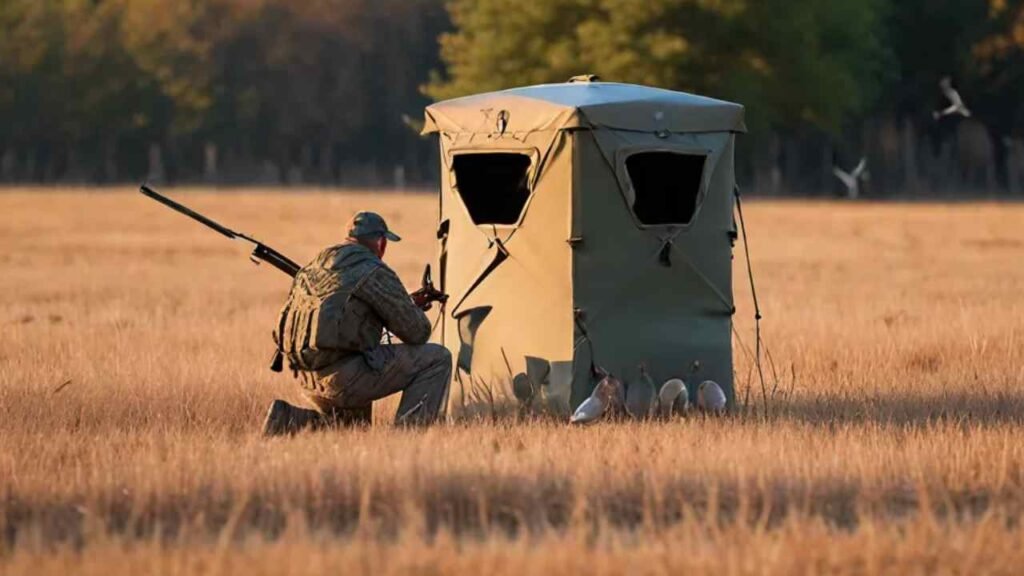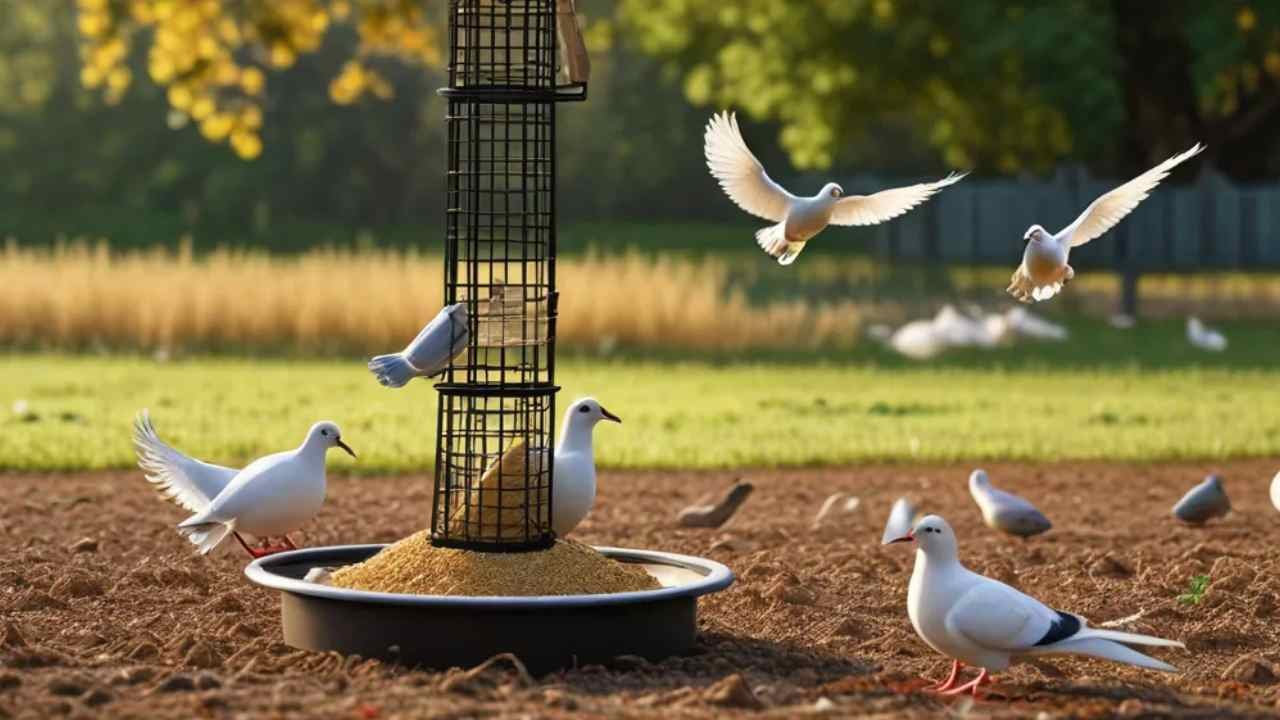Dove hunters know that bringing these nimble birds to their land is crucial for a good hunt. This guide focuses on the main methods to create a hot spot for the bird, promising an exciting and satisfying hunt.
Understanding Dove Behavior: The Key to Success
Doves, birds often seen in North and South America, migrate routinely. Their flight can be unpredictable and swift, which hunters find thrilling yet tough to target. Knowing what doves need and prefer, can help in attracting them effectively.
- Habitat Preferences: Doves love places where they can find plenty of food and water easily. Try to find open fields that don’t have any intruding obstacles. This way, they can spot any danger quickly. Farmlands growing grain crops such as corn, millet, or sunflowers are perfect. They also need somewhere to rest at night, so make sure there are trees or bushes around. All these facts can help you make a place where doves will gladly come.
Common Dove Species in North America
| Species | Description | Habitat Preference |
|---|---|---|
| Mourning Dove | The frequently seen in North America is known for its sad-sounding cooing call. | Open fields, agricultural lands, woodlands |
| White-winged Dove | It’s not as big as the mourning dove and has unique white spots on its wings. | Open fields, deserts, scrublands |
| Common Ground Dove | This little bird lives on the ground and has a speckled chest. | Open fields, grasslands, pastures |
| Inca Dove | Long-tailed bird that stands out because of its unique cooing sound. | Woodlands, riparian areas, suburban backyards |

- Food Sources: Doves, as a rule, eat seeds and grains. They love tiny stuff like millet, sorghum, and broken corn. Come fall, they snack on fruits and berries. This insight about their favorite foods helps you. You can use it to plant suitable crops or cleverly spread seeds. That way, you’ll have these birds visiting your property in no time.
- Migration Patterns: Doves are migratory birds and travel with the seasons. They might be in your place just part of the year. Know when they come and go in your area. Look at the web for facts from your state’s wildlife office or national organizations like the U.S. Fish and Wildlife Service. This info is useful. It lets you know the best times to hunt, when there are lots of doves around.
Turning Your Property into a Dove Magnet
Got the scoop on dove habits? Great, now you can change your yard to lure in these birds. Let’s go through these handy strategies:
Choosing the Right Location
Finding the right spots is crucial in drawing doves. Think about these important factors:
- Proximity to Natural Food Sources: Don’t forget, finding places close to fields growing dove’s favorite foods such as millet, sorghum, or sunflowers is top priority. If you can’t find these fields, think about cultivating these plants on your own land
- Access to Water: Birds must have easy access to clean water, they need it for drinking and digestion. Your best bet is a natural source, maybe a pond or stream. If not, get creative! A birdbath or shallow pool could do the trick.

Planting Dove-Attracting Crops
Dove-friendly crops are a great choice. Try these crops:
- Millets: Doves adore these tiny, protein-packed seeds. They’re convenient to grow and ripen fast, giving food all through the hunting season.
- Sorghum: Another good pick, they enjoy sorghum’s carbs. It grows more slowly compared to millets, which means more food available for late-season hunting.
- Sunflowers: Actually, sunflowers aren’t grains. But doves can’t resist them. Their big seeds are chocked full of oils and nutrients.
Planting Guide for Dove-Attracting Crops
| Crop | Planting Time | Maturity Time |
|---|---|---|
| Millet | Early spring | 6-8 weeks |
| Sorghum | Late spring/early summer | 70-100 days |
| Sunflowers | Late spring/early summer | 80-120 days |
Planting Tips: Plant your food plot in a sunny location with well-drained soil. Aim for a planting time that allows the crops to mature before peak dove season in your area.
Providing Grit: Just like other bird species, doves also need grit to help them digest food. What’s grit? It’s simply small stones and tiny pebbles. These bits help breakup food in their gizzards. How can you supply grit? It’s easy! Sprinkle pea-sized gravel or buy grit mixes from a store. Just remember to scatter these close to where they eat.
Creating Nesting Sites (Optional): You may not need fancy tricks to catch them. Still, if you get them to nest in your area, they might stick around. More doves mean more hunting opportunities. How can you make this happen? Plant a few dense trees and shrubs or put up a dove house. These steps could make them feel at home and keep them around longer. Having enough of them around is also a good sign for the dove numbers in the future.
Putting Your Preparations into Action
Got your dove place all set? Good. Now, let’s discuss how to boost your hunting performance.
Decoys and Calls (Optional)
Not necessary, but hey, these tools could help draw doves to where you hunt.
- Types of Decoys: A variety of decoys exist, each with a unique role. Landing decoys, for example, portray birds with wings half-open, representing doves set to land. Those marked as feeding decoys illustrate doves looking downwards, indicating a quest for food. Aim for a balance of decoy types for a lifelike feeding group image.
- Effectiveness of Decoys and Calls: Success varies with factors like hunting intensity or natural dove mood. This can indeed be helpful in luring them, particularly in zones with fewer dove numbers.

Types of Dove Decoys
| Type | Description | Use Case |
|---|---|---|
| Landing Doves | Show doves with wings slightly open. | Attract doves coming in to land |
| Feeding Doves | Display the bird sitting on the ground. | Mimic a realistic feeding flock |
| Silhouette Decoys | Use flat, 2D decoys | Effective in open fields with good visibility |
| Spinning-Wing Decoys | Make sure they have mechanical wings that act like they’re eating. | Can pull in doves from a ways away. (Remember to check local rules about electronic calls). |
Scouting and Blind Placement
For a fruitful hunt, scouting is a must. Find flyways – doves’ well-known flight routes between their feeding and roosting areas.
- Spotting their Migration Paths: Keep an eye on dove movement in the evening when they head back to their roost. Look for common flying routes and zones with many doves. These flyways are great places to set your blind.

- Setting Blinds near Food Spots: After finding dove routes, pick a thoughtful spot near a feeding area for your blind. Hide your blind skillfully with natural elements like branches and leaves to merge with the environment.
Conclusion
To attract doves for a good hunt, it’s important to understand them. Know their favorite places, what they eat, and where they fly. Create a nice space for them. Choose a place where their natural food grows or plant crops that doves love like millet, sorghum, and sunflowers. Adding grit and maybe a place for nests also works. Use decoys and calls the right way. Scout carefully to find out where they fly to and from before hiding a good hunting blind near feeding areas. Be a responsible hunter. Hunt at the start of the season, be respectful, and enjoy the moment. Following these steps will help with dove conservation and also your hunt.

